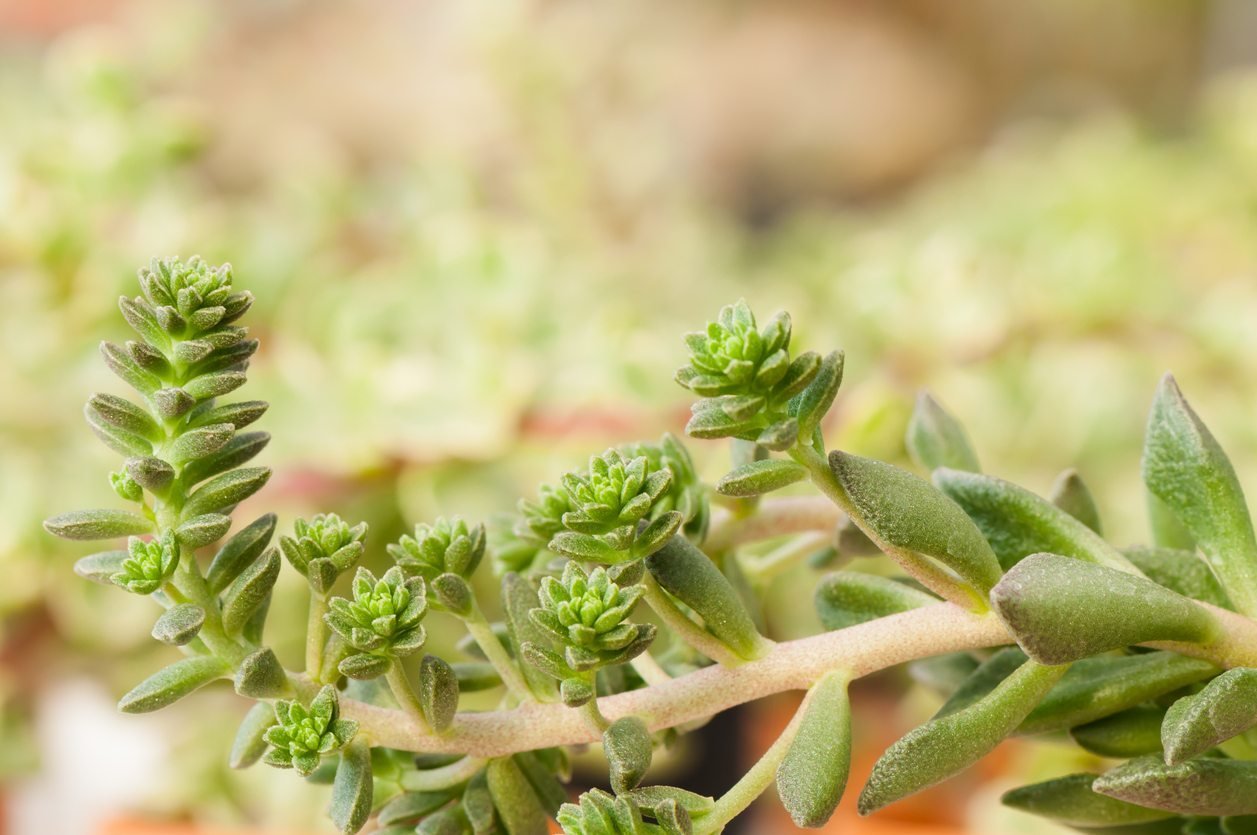Succulents are easy to grow indoor plants who survive droughts easily. They are naturally habituated with high sunlight. Inadequate sunlight is the main reason behind overgrown succulents.
Succulents can be exposed to the sun for about six hours per day. The scorching sun is helpful for the thriving of newly planted succulents. Sunlight plays an important role in the treatment of overgrown succulents.
Succulent plants sometimes stretch too long providing them with a leggy, overgrown and unexpected look. Overgrown succulents are a big issue to succulent lovers. People need to follow a few steps to get rid of overgrown succulents.
But before treating overgrown succulents, one needs to know the reasons behind it.
Overgrown succulents can get easily treated once the reason behind its growth vanishes.
Why do Succulents Overgrow?
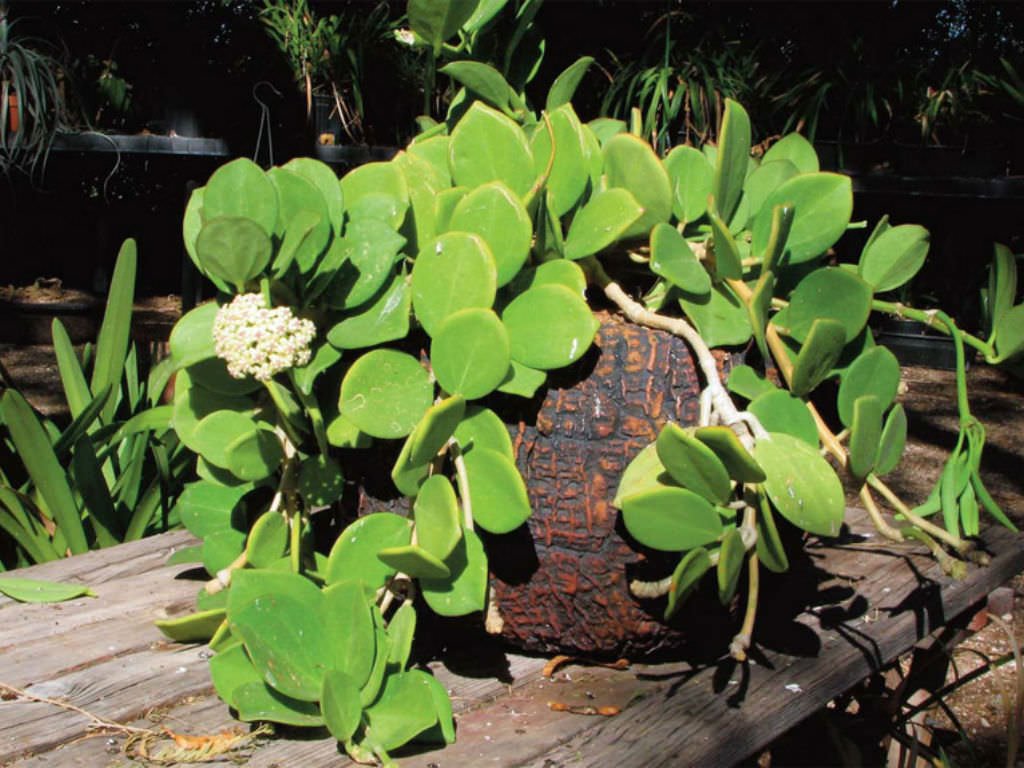
Succulents mainly overgrow due to lack of sunlight. They need a certain amount of sunlight daily and if they don’t get it properly it can result in overgrowth.
The result will be visible within a few weeks of the plant not getting sunlight properly. It starts to stretch itself to get enough sunlight which makes it appear leggy.
So, It is important to know how much sunlight do succulents need.
Which Succulents usually stretch?
Both the succulents kept indoor and outdoor, can overgrow.
Getting adequate sunlight is harder for indoor succulents because the sunlight coming through windows is not as strong as outside.
Outdoor succulents also overgrow if they can’t get enough sunlight due to any reason.
Is the overgrowth unhealthy?
This overgrowth makes the plant unhealthy and makes them look unattractive.
The lack of light can eventually kill it after 1-2 years.
Succulent stretching due to lack of light or it’s naturally overgrown?
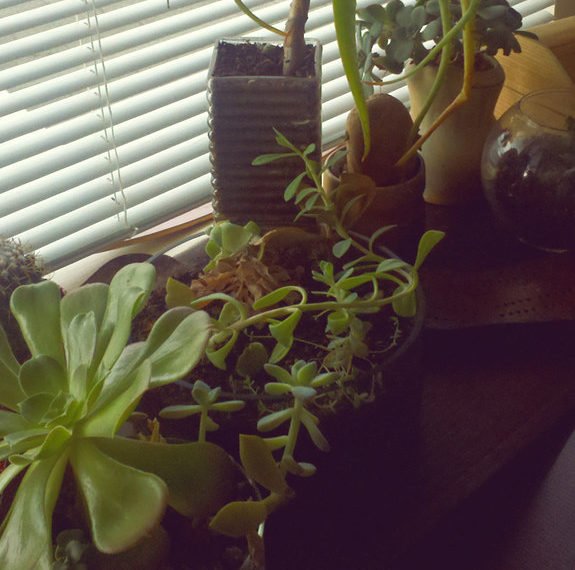
Every succulent doesn’t become leggy because they are not getting enough sunlight. Some of them have a nature to become leggy.
The plant which has become leggy due to inadequate sunlight will have a weak-looking, light-colored stem. The process is called etiolation.
The plant having nature to become leggy will have a strong stem that will be vibrant in color definitely.
What to do with Overgrown Succulents?
If one finds their succulent overflowing first one has to find the reason behind its growth. If you find that it is overgrowing due to lack of sunlight the undermentioned suggestions are for them.
1. Pruning of Overgrown Succulents

One should prune their overgrown succulents in spring or summer. Spring is their growing season, so it is the best season for pruning. Try to do it in early spring before the growth starts.
Spring is the best time also because succulents tend to grow leggy during winter because of less sunlight.
The pruner which will be used should be clean and sharp to avoid infections and jagged cuts. Wear a pair of gloves while pruning to avoid the irritating sap and thrones of the plant.
The plant should be cut leaving 2-3 inches of it from the base. It should have few green leaves even after cutting, so it can survive through photosynthesis.
These cuttings can be used for propagating new stocks later.
2. Replanting of the Overgrown Succulent cuttings
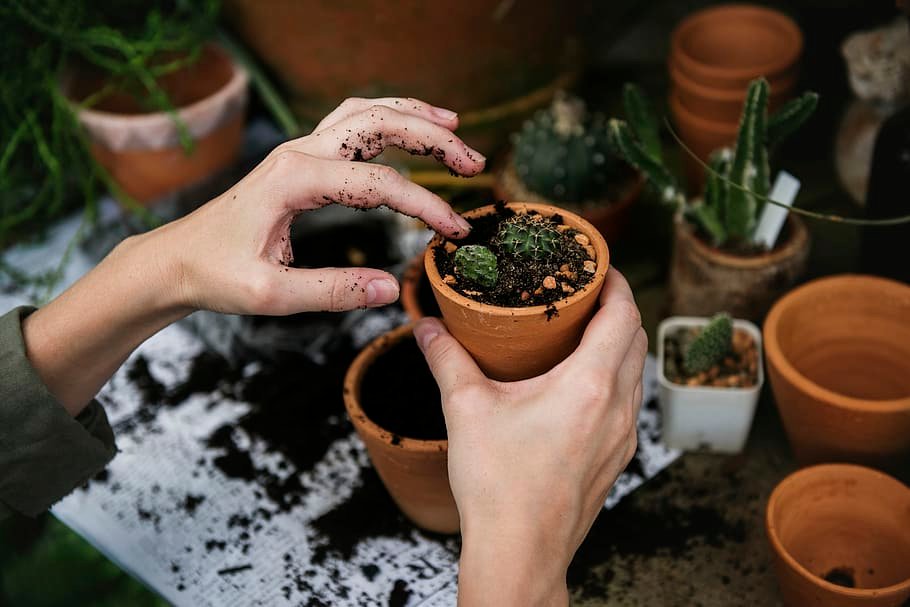
The overgrown succulent cuttings need to be left in a sunny place, not in scorching sunlight for 2-3 days to get healed and sealed.
In humid places, it might take much more time than this. Once they are dry, plant them in a pot of succulent mix. If their stems are too long, trim 1-2 inches from the lower portion of the stem.
Replant them properly so that they don’t fall out. Use a spray to sprinkle water in the soil, don’t drench it. Again sprinkle water only if you find the soil dry.
Once they get rooted, water can be applied directly to the soil. The whole process will take a few weeks. One can shift them to direct sunlight once they get rooted.
They also need to get shifted to a bigger pot at this stage. It will help the plants to grow healthy and faster.
For better results keep on checking their roots every six months if they need a bigger pot to thrive.
This way one can generate new stocks from overgrown succulents without spending money on them.
Other reasons to prune Overgrown Succulents
One can prune overgrown succulents to redirect their new growth in a favorable manner.
In this process, one first has to decide the direction he wants the plant to thrive. After that, the branch which is growing in that way needs to be recognized. And then the branches above that chosen branch.
So, the succulent should start growing in the chosen direction. This process is usually applied to woody succulents.
Repotting of Overgrown Succulent
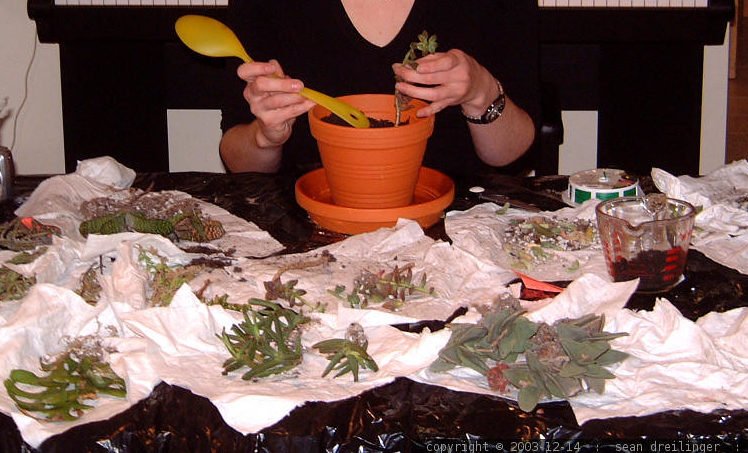
Succulents usually overgrow after a couple of years. At this condition, it needs to get repotted for the proper growth of its roots.
They need to get shifted to a larger pot full of succulent mixed soil. Trimming the extra overgrown foliage. Adequate soil nutrients and sunlight are also mandatory for the betterment of succulents.
When to Repot Overgrown Succulents
Succulents usually get planted in a small pot at the starting. They need to get repotted as they start to grow bigger. There are signs one need to understand before repotting overgrown succulents:
- The roots must become too tight and sometimes can be stretching out of the pothole for more space.
- The plant overgrows the pot.
- The plant looks unhealthy even after getting enough water and light.
- The whole pot doesn’t get soaked after watering and the soil gets dried within a few hours.
- The succulent has stunted growth as the soil has lost its fertility.
- The succulents need to get repotted once in two years to the fresh and fertile soil.
Things to consider while repotting Overgrown Succulents
Succulents don’t need much care to thrive. There are a few things which are needed to get considered before repotting a succulent
- A larger bowl than the previous one to let the plant thrive properly. The pot must have a hole at the bottom for drainage.
- Succulents love sunlight. So, they need to be put in an area full of sunlight where they can get sunlight for 6-8 hours. There are some succulents that can thrive indoors in indirect sunlight.
- Succulents need very less water. If one finds their leaves soft and moist, it’s time to water them. Even if the soil gets drenched with water, it can harm the plant.
- Wet soil is harmful to succulents. So, use a soil mix that can easily get drained. The perfect succulent mix is one that has sand and small stones alongside soil.
- Temperature is an important element for growing a succulent. Succulents feel better in warm and hot temperatures. So, in winter they are to be taken inside the house. And keep them away from frost.
- Ornaments and accessories can be added to the pot to improve the appearance of the plant and to keep the leaves clean from the soil. Though it’s an option only.
Is Dormancy the right time to Repot
Dormancy is a period of a plant’s life cycle when it doesn’t grow much.
Repotting an overgrown succulent at this stage can harm the growth of the plant later and lessens its survival rate.
It’s best to report a succulent when it is growing, i.e. Spring as it heightens its survival rate.
How to Repot an Overgrown Succulent
- Remove the whole plant carefully by pulling from the stem from the old pot. The roots should not get damaged.
- Fill the new larger pot with lightly moist soil like cactus or succulent mix. The soil should not be drenched with water. It should have a portion of small rocks and sand within it.
- Any undesired foliage should be trimmed with a clean and sharp cutter. After that, the plant will be arranged in that new larger pot.
- The empty portion of the new pot must be filled with the same soil.
- The plant should be shifted in proper light once it gets rooted.
- Re-water only after the soil gets dried totally. Excessive water in the soil can harm the plant.
- Attractive accessories can be added for the betterment of its appearance but it’s still an option.
Providing adequate Light to the Succulents
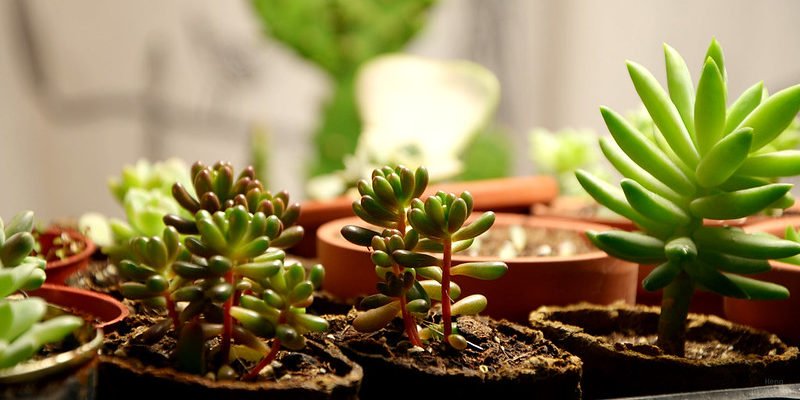
If one finds their succulent has started stretching recently, put it outdoor for a few days. When its reason to stretch vanish, it stops stretching.
For indoor plants, special lights can be purchased to help them thrive in the right manner.
What is a Miniature Succulent Fairy Garden
A miniature succulent fairy garden is a miniature container garden full of beautiful succulents. It is usually decorated with small bench sets, tea sets, cottages, fences, springs, and much more.
It is the perfect place for a fairy to live in. Tiny pixie, elf, gnome, the unicorn can be added to it according to its magical theme: humor added.
Things to consider before preparing a Succulent Fairy Garden
Before preparing a succulent fairy garden, one must gather all the things necessary for it. The list is like this:
- One has to decide the theme of the garden first. The themes can be of medieval times, modern city, sea beach, castle, fairyland anything matching one’s imagination.
- Once the theme is decided, one has to make a plan.
- According to the plan, the location must get decided. It can be either outdoor or indoor. According to the theme one needs to get accessories befitting the theme. Right containers and succulents need to get chosen. A proper succulent mix of soil is also needed to get prepared.
- One needs to choose containers. Any container full of succulent mix can be used in a fairy garden.
- One can buy fancy tubs, galvanized metal bowls, a bowl made of stone or bone china, tiered planters, wooden barrels, etc. to provide a fancy look to their garden.
- The container must have a hole at the bottom for water drainage.
- The soil for the garden must be full of organic matter. Adding a layer of pea gravel at the bottom of the soil can help in the drainage of the garden. A layer of charcoal can be also added to keep the garden-fresh.
- The accessories must be a mixture of natural and artificial items. Natural items like stone, pebbles, moss, bark, twigs can be gathered from nature.
- Artificial items like small fences, houses, cottages, benches, tea sets can be either bought from the store or made at home. Pixie, gnome and other mythical figures’ statues are also fit for it. To add a medieval touch, add small castles, bridges, and cattle. To set up a modern city, go to long buildings, towers, cars, and trains.
- Choosing the right succulents is an important part of preparing a succulent fairy garden.
- The succulents need to be small in size so that by trimming it can be kept small and perfect for the garden.
- One should choose plants according to his plan. There are some succulents who don’t do well in the indoor atmosphere. For outdoor gardens, it’s not a big issue.
- The succulents might be comfortable growing with other plant species like flowers and herbs as well.
- The herbs like rosemary, oregano, etc are the perfect fit for the garden.
- Flowering plants like violet, Bluebells, Foxgloves, etc are the right ones to fill the succulent fairy garden with bright and vivid colors.
- Some suggested succulents for this purpose are Chocolate Soldier, Echeveria, Pigmyweeds, Jade plant, Ragworts, Burro’s tail, Living Stone, Mammillaria, The Common Houseleek, Hens and Chicks, Sedum, Panda Plant, etc.
Care for a Succulent Fairy Garden
Care for a succulent fairy garden almost cost nothing. Succulents don’t demand much money and care to thrive. There are a few steps one can follow to take care of their dream succulent fairy garden:
- The soil used in the pots must be a perfect succulent mix and well-drained for sure.
- Don’t wet the leaves of your plants.
- Water only when the soil is totally dry.
- Place your small garden in a sunny place outdoor.
- For indoor gardens, the south-facing window is the best place to put it at.
- Apply proper accessories according to the chosen theme to improve the garden’s appearance.
- If one chooses the sea beach theme, one should apply a protective ground cover to not to let the sand mix up with the soil.
- Properly fertilize the soil.
- Don’t forget to trim the plants whenever needed with precautionary measures.
- Repot the plants if they overgrow the pot they are rooted in.
Basics of planting Succulents
Types of Succulents
There are more than 100 species of succulents in this world. Their need for sunlight and water varies a bit from each other.
- Aloes, cactus, echeverias, agaves, aeoniums, crassulas, Kalanchoes are a few easy-grow species of succulents.
- Succulents can be divided into variants depending on the condition they can survive in. Some variants are indoor succulents, cold-hardy succulents. Find 10 best low light indoor plants.
Care for Succulents

Succulents are plants you don’t need to take much care of. Few steps to follow to help them thrive :
- Use drained, fertilized, and proper succulent or cacti mix.
- Keep them in a sunny place. They need 6-8 hours of sunlight per day.
- The pot they are rooted in must have a hole in the bottom.
- Don’t drench the soil with water. Only water the soil when it is completely dry.
- Keep trimming and repotting them as needed.
Can Succulents and Cacti be planted Together?
Succulents and cacti can be perfectly paired in a pot.
They have similar kinds of physical features and need the same kind of atmosphere to grow.
Both of them have juicy foliage. Both of them thrive in dry soil, less water, and lots of sunlight. They don’t demand much care and expenses to survive.
Succulents and cactus look nice together. If they are kept indoors, they must be placed near a window so that they can get enough sunlight.
